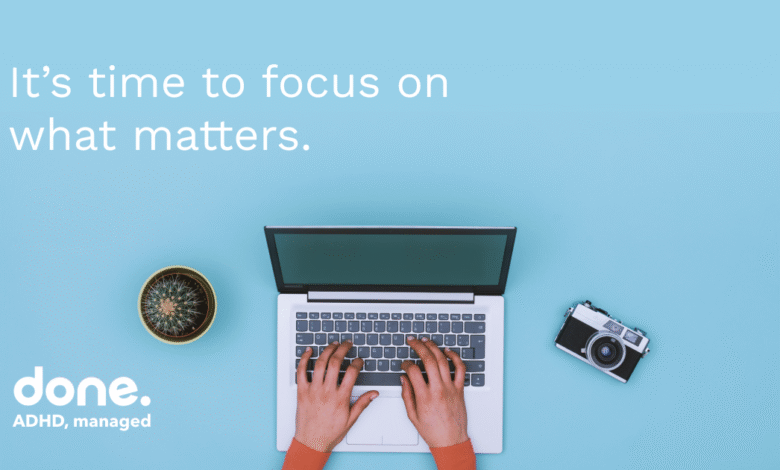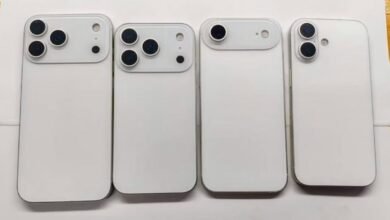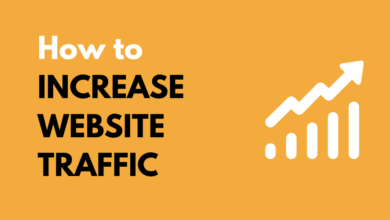Done ADHD: A Complete Guide to Understanding, Managing, and Thriving

Introduction to Done ADHD
Attention Deficit Hyperactivity Disorder (ADHD) has been a well-researched condition for decades, but in recent years, new platforms and services like Done ADHD have stepped into the spotlight. Done ADHD is a telehealth service that focuses on diagnosing and treating ADHD in a modern, accessible way. For many people, the idea of receiving help without the long waiting lines, endless paperwork, and in-person visits has been a game changer.
ADHD is not just about being easily distracted or hyperactive. It is a condition that impacts focus, organization, time management, and even emotional regulation. Many adults struggle with without even realizing it, which is why services like Done ADHD are becoming more popular—they provide an easier entry point into the world of diagnosis and treatment.
The growing recognition of ADHD as a lifelong condition—not just something kids “grow out of”—has led to higher demand for care. Done ADHD aims to bridge that gap, offering online support that caters to busy lifestyles. This approach has sparked both enthusiasm and skepticism, and that makes it worth exploring in detail.
What Exactly is Done ADHD?

Done ADHD is a digital healthcare platform that provides online ADHD assessments, treatment plans, and medication management. Think of it as a modern alternative to the traditional psychiatric office. Patients can fill out an online evaluation, meet with a licensed provider through telehealth, and if diagnosed, receive prescriptions directly through a pharmacy.
The platform is designed for adults who may have gone years without proper care. It targets people who recognize ADHD symptoms in themselves but feel overwhelmed at the thought of traditional clinical visits. This includes young professionals, college students, parents, and anyone juggling multiple responsibilities. Done ADHD simplifies the process by putting everything in one place—diagnosis, prescriptions, and follow-up care.
The convenience of Done ADHD cannot be overstated. For many, the biggest barrier to treatment is not money but time. Having a streamlined platform reduces excuses and helps people access help faster. However, as with any telehealth service, the question arises: how does Done ensure quality, accuracy, and safety?
The Benefits of Done ADHD
One of the biggest advantages of Done is accessibility. Not everyone lives near a psychiatrist, and not everyone has the flexibility to schedule in-person visits. Done ADHD provides evaluations and ongoing support from the comfort of home. This is particularly valuable for people in rural areas or those with demanding schedules.
Another benefit is speed. Traditional diagnosis can take months, sometimes even years, with long waitlists for specialists. reduces that wait significantly by offering quicker initial assessments and faster connections to licensed providers. For people who have struggled for years without answers, this efficiency can feel life-changing.
Lastly, Done ADHD focuses on continuity of care. Instead of leaving patients to figure out next steps on their own, the platform provides ongoing medication management, follow-ups, and guidance. This is crucial for , which requires consistent monitoring and adjustments to treatment. Patients don’t just get a one-time evaluation; they get ongoing support.
Criticisms and Concerns About Done ADHD
Despite its benefits, Done is not without controversy. Some critics argue that telehealth platforms can over-simplify a very complex diagnosis. ADHD overlaps with other conditions like anxiety, depression, or sleep disorders. A quick online assessment may not capture the full picture of someone’s mental health.
There are also concerns about medication management. medications, particularly stimulants like Adderall or Ritalin, are controlled substances. This means they require careful prescribing and monitoring. Critics worry that telehealth services could be exploited or abused, potentially leading to over-prescription.
Finally, some people feel that telehealth lacks the human connection of in-person visits. Building trust with a provider can be more difficult online. For patients who need deeper psychological support, may not be a replacement for traditional therapy. Instead, it works best as a supplement or a starting point for care.
Who is Done ADHD Best Suited For?
Done ADHD is not a one-size-fits-all solution. It is particularly well-suited for adults who suspect they may have ADHD but don’t know where to begin. For someone who has struggled with focus, procrastination, or impulsivity for years, the platform can serve as an accessible first step.
It’s also a great option for people who already know they have ADHD but want consistent medication management. Instead of visiting a clinic every few months, they can check in with their provider virtually and get prescriptions refilled quickly. This helps them stay on track without disrupting their schedule.
However, Done ADHD may not be ideal for individuals with complex mental health histories. If someone is dealing with bipolar disorder, severe depression, or substance abuse, they may need more comprehensive, in-person psychiatric care. Done ADHD is helpful, but it cannot replace the depth of traditional mental health services for complex cases.
The Process of Getting Started with Done ADHD
The process of starting with Done ADHD is relatively simple. It begins with filling out an online questionnaire about your symptoms, lifestyle, and history. This initial evaluation is followed by a telehealth appointment with a licensed provider. If the provider confirms a diagnosis, they may recommend a treatment plan that includes medication and follow-up care.
The next step is prescription management. Medications are sent to a local pharmacy, and patients can track refills through the platform. Regular follow-ups ensure that the dosage is working correctly and adjustments are made as needed. Done ADHD also encourages patients to track their progress and report back on how treatments are affecting daily life.
While the process is streamlined, it’s not entirely automated. Real providers are involved in every step, making sure that the care is personalized. This combination of efficiency and professionalism is what makes Done ADHD appealing to many.
Living with ADHD Beyond Medication
While Done ADHD focuses heavily on diagnosis and medication, it’s important to remember that ADHD management goes beyond pills. Lifestyle adjustments, therapy, and self-care are just as essential. Medications can help regulate focus and impulsivity, but they are not a cure-all.
Cognitive Behavioral Therapy (CBT), for instance, is a powerful tool for learning coping strategies. Time management systems, mindfulness practices, and structured routines also help people with ADHD thrive. Done ADHD may provide the medical foundation, but patients still need to take charge of building habits that support long-term growth.
Another key factor is community. Many people with ADHD feel isolated or misunderstood. Finding support groups, whether online or in person, helps reduce that sense of isolation. Done can be the start of a journey, but success depends on combining medical care with personal development and supportive relationships.
The Future of ADHD Care and Telehealth
Done ADHD represents just one part of a much larger shift toward telehealth. The pandemic accelerated the adoption of virtual healthcare, and now it has become a permanent fixture in the medical world. For conditions like ADHD, telehealth offers a lifeline for millions of adults who otherwise would not seek help.
As telehealth evolves, we are likely to see platforms like expand their services. This could include therapy sessions, group coaching, or integrated care with other mental health conditions. The goal is not just convenience but comprehensive, holistic treatment that meets the needs of patients wherever they are.
The future looks promising, but it also requires careful regulation. Balancing accessibility with responsibility is key. Done is part of a growing movement, and its success will depend on its ability to provide safe, effective, and ethical care for people living with ADHD.
Conclusion: Is Done ADHD Worth It?
Done ADHD is not a miracle solution, but it is a valuable tool for many. By making ADHD care more accessible, faster, and less intimidating, it has opened the door for thousands of people who might otherwise never have sought treatment.
It’s best suited for adults with relatively straightforward ADHD needs—those who want diagnosis and medication management without the hassle of traditional clinics. But it should be paired with lifestyle changes, therapy, and long-term strategies to be truly effective.
Ultimately, highlights an important truth: ADHD care should be simple, accessible, and supportive. While no platform is perfect, Done ADHD has taken a bold step toward reimagining how mental health care can fit into our modern lives. For many people, that step might be exactly what they need to finally take control of their ADHD journey.



